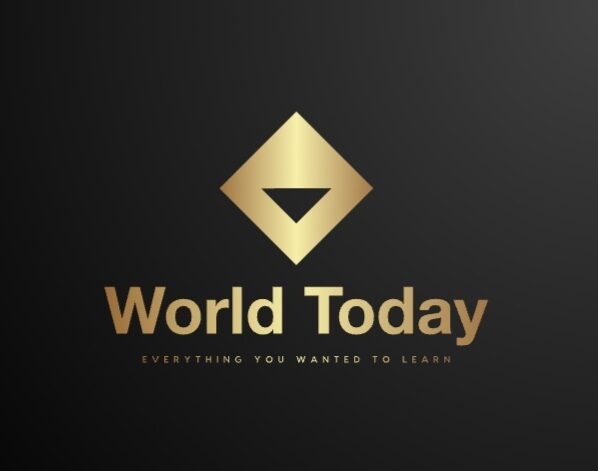
The Liquid Gold That Shaped the World.
Whiskey isn’t just a drink; it’s a story in a bottle. From medieval monks in misty European monasteries to bootleggers racing across the American backroads, whiskey has been a silent witness to revolutions, wars, economic booms, and global empires. Nations have fought over it, fortunes have been made and lost, and entire industries have risen and fallen in its wake. This article takes you on the most detailed journey ever written on the history of whiskey – tracing its origins, evolution, and impact on politics, wars, and economies worldwide. We’ll explore the legendary distillers who shaped its legacy, the dark days of Prohibition, and how whiskey survived and thrived against all odds. Buckle up. This is whiskey like you’ve never seen before.
1. The Origins of Distillation :
The Birth of Firewater. Before whiskey, there was the art of distillation—a process that dates back thousands of years. The earliest known records of distillation come from Mesopotamia around 2000 BCE, where ancient alchemists experimented with extracting essential oils from plants. The Egyptians and Greeks further refined these techniques, but it was the Arab scholars who truly advanced distillation. In the 9th century, Persian alchemist Abu Musa Jabir ibn Hayyan (known in the West as Geber) created the first known alembic still. His work laid the foundation for the distillation of alcohol, though at the time, spirits were used for medicine rather than pleasure. The term “alcohol” itself comes from the Arabic word “al-kuḥl”, meaning a purified substance. As these techniques spread into Europe via the Moors and medieval scholars, Christian monks seized upon distillation—not just for medicine, but for something far more intoxicating.

2. Medieval Monks and the Birth of Whiskey
The earliest form of whiskey as we know it was first produced by monks in Ireland and Scotland around the 12th century. Catholic monasteries were centers of learning and innovation, and it was likely the Irish monks who first adapted Arabic distillation techniques to make a crude form of whiskey, which they called “uisce beatha”—Gaelic for “water of life.”
Early whiskey was raw, fiery, and unaged. It lacked the refinement of modern spirits, but its warming properties made it a cherished drink, especially in the cold northern climates. The first recorded mention of whiskey appears in the Scottish Exchequer Rolls of 1494, where King James IV ordered “eight bolls of malt to Friar John Cor to make aqua vitae.” This proves that whiskey was already a well-known drink among monks and nobles alike.
However, with the dissolution of the monasteries in the 16th century, whiskey-making moved from religious institutions to the hands of farmers and underground distillers—setting the stage for centuries of rebellion, smuggling, and secret stills.
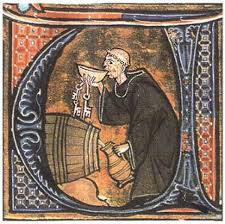
3. Taxes, Smuggling, and the Whiskey Wars of Europe
By the 17th century, whiskey had become a staple in Scotland and Ireland, consumed by the rich and poor alike. Governments, eager to profit from its popularity, imposed heavy taxes on distillers. This led to widespread illegal distilling and smuggling, particularly in Scotland’s rugged Highlands, where illicit stills were hidden in caves and remote glens.
The British government, struggling to enforce taxation, introduced the Excise Act of 1823, which legalized small-scale distilling under license. This marked the birth of the modern Scotch whisky industry, with famous distilleries like Glenlivet, Macallan, and Lagavulin emerging as legitimate businesses.
Meanwhile, in Ireland, whiskey was booming, with Dublin becoming the epicenter of high-quality pot still whiskey. By the mid-19th century, Irish whiskey was the most popular spirit in the world, outselling Scotch and American whiskey combined.
But that wouldn’t last forever.
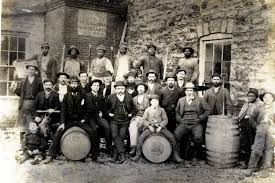
4. The American Whiskey Revolution: Frontier Spirit and the Birth of Bourbon
Across the Atlantic, whiskey took on a life of its own. When Scottish and Irish immigrants settled in the American colonies, they brought their distilling knowledge with them. However, unlike in Europe, where barley was the dominant grain, American distillers turned to corn and rye, leading to the creation of new styles of whiskey.
The 1791 Whiskey Rebellion was one of the first major tests of federal authority in the young United States. When Alexander Hamilton imposed a whiskey tax, distillers in Pennsylvania revolted, forcing President George Washington to send federal troops to crush the rebellion. This event cemented whiskey’s role in American history—not just as a drink, but as a symbol of resistance and independence.
As settlers moved westward, whiskey became the currency of the frontier. It was used for trade, medicine, and even as wages. In Kentucky, whiskey-makers discovered that aging spirits in charred oak barrels dramatically improved the flavor, giving birth to bourbon whiskey—a distinctly American invention.
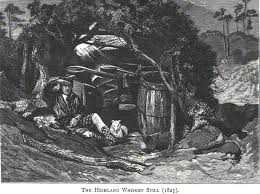
5. Prohibition and the Rise of Bootlegging: Whiskey in the Shadows
One of the darkest chapters in whiskey history came in 1920, when the United States enacted Prohibition, banning the sale and production of alcohol. Legal distilleries shut down overnight, and bootlegging became a lucrative but dangerous business.
Infamous gangsters like Al Capone controlled massive underground liquor operations, smuggling whiskey from Canada and Scotland. Speakeasies flourished in every major city, while moonshiners in the Appalachian mountains cooked up homemade whiskey in hidden stills.
The quality of black-market whiskey varied wildly—some was decent, but others were dangerously toxic. Many people were poisoned by “bathtub gin” and cheap, industrial-grade spirits. It wasn’t until 1933, with the repeal of Prohibition, that the whiskey industry began to recover.
But the damage had been done. Irish whiskey, once the world’s most popular, never regained its dominance. Meanwhile, American and Scotch whiskies surged in popularity, laying the foundation for the modern industry.
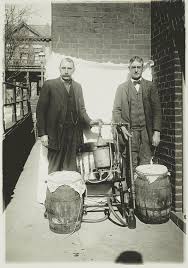
6. Whiskey’s Role in War, Politics, and Economy
Whiskey has played a role in countless wars and political movements. During the American Civil War, both Union and Confederate soldiers drank whiskey to cope with the horrors of battle. In World War II, distilleries shifted production to industrial alcohol for the war effort, halting whiskey-making for years.
Post-war, whiskey became a symbol of prosperity. Advertising campaigns in the 1950s and 60s transformed brands like Jack Daniel’s, Johnnie Walker, and Jameson into global icons. Today, whiskey is a billion-dollar industry, with rare bottles fetching record-breaking prices at auctions.

7. The Modern Whiskey Renaissance and the Future
The 21st century has seen a massive whiskey revival, with craft distilleries booming worldwide. Japanese whiskey, once a niche product, has risen to global prominence, winning prestigious awards. Bourbon is in high demand, with small-batch and single-barrel releases becoming collector’s items.
From its humble beginnings in monastic stills to the multi-billion-dollar industry it is today, whiskey has shaped history in ways few other drinks can claim.

Whiskey in Culture: Movies, Literature, and Famous Drinkers
1. Whiskey in Movies: The Silver Screen’s Favorite Drink
Whiskey has long been a symbol of power, rebellion, and sophistication in cinema. Whether it’s a rugged cowboy downing a shot in a saloon or a suave spy sipping a fine Scotch, whiskey is often more than just a prop—it’s a character in itself.
Iconic Whiskey Moments in Film
- James Bond (Skyfall, 2012) – While Bond is known for his martinis, Skyfall saw him embrace whiskey, specifically Macallan 50-Year-Old, reinforcing its elite status.
- The Shining (1980) – Jack Nicholson’s terrifying descent into madness is fueled by Jack Daniel’s Tennessee whiskey, making it an unforgettable cinematic image.
- The Godfather (1972) – Don Corleone drinks whiskey during key moments, symbolizing power and tradition in the mafia underworld.
- Lost in Translation (2003) – Bill Murray’s famous “For relaxing times, make it Suntory time” line helped introduce Japanese whiskey to global audiences.
- Unforgiven (1992) – Clint Eastwood’s whiskey-fueled gunslinger reflects the Old West’s hard-drinking culture.
Whiskey in TV Shows
- Mad Men – Don Draper’s office is stocked with Canadian Club, embodying the 1960s advertising world’s high-functioning alcoholism.
- Peaky Blinders – The Shelby gang’s drink of choice is Bushmills Irish whiskey, a nod to their rebellious nature.
- Breaking Bad – Walter White and Mike Ehrmantraut bond over a rare bottle of Dimple Pinch Scotch, emphasizing its prestige.
Whiskey in film and TV is often a marker of masculinity, power, and introspection—whether it’s a mob boss plotting his next move or a cowboy preparing for a duel.
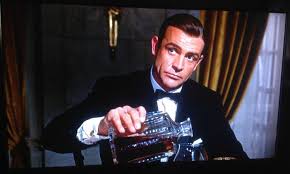
2. Whiskey in Literature: A Writer’s Best Friend
Whiskey has fueled some of the greatest literary minds in history. Many legendary writers have had an intimate relationship with whiskey, often using it as both inspiration and vice.

Writers Who Loved Whiskey
- Ernest Hemingway – A known whiskey drinker, Hemingway often wrote about alcohol. His novel For Whom the Bell Tolls references whiskey as a soldier’s escape from the horrors of war.
- F. Scott Fitzgerald – Whiskey played a key role in The Great Gatsby, representing excess and the roaring ‘20s culture.
- William Faulkner – He reportedly said, “There’s no such thing as bad whiskey. Some whiskeys just happen to be better than others.”
- Mark Twain – A lover of Old Crow Bourbon, Twain famously said, “Too much of anything is bad, but too much good whiskey is barely enough.”
- Hunter S. Thompson – His Fear and Loathing in Las Vegas prominently features Wild Turkey 101 as his drink of choice.
Whiskey has been romanticized in literature as a source of comfort, creativity, and sometimes destruction—mirroring the lives of the authors who wrote about it.
3. Famous Figures and Their Whiskey Preferences
Many world leaders, celebrities, and historical figures have had a favorite whiskey. Some were connoisseurs, while others simply saw it as a personal ritual.
Politicians & World Leaders
- Winston Churchill – Loved Johnnie Walker Red Label and was known to drink whiskey throughout the day, famously saying, “I have taken more out of alcohol than alcohol has taken out of me.”
- Margaret Thatcher – Preferred Famous Grouse Scotch, often drinking it while working late into the night.
- Franklin D. Roosevelt – His favorite whiskey was Old Overholt Rye, which he enjoyed in Old Fashioneds.
- Lyndon B. Johnson – Kept a stash of Cutty Sark Scotch in his car, drinking it while being driven around his Texas ranch.
Entertainers & Icons
- Frank Sinatra – Jack Daniel’s was his go-to drink; he was even buried with a bottle.
- David Beckham – Co-founded Haig Club, a Scotch whisky brand focused on smooth and stylish drinking.
- Johnny Cash – A lover of Tennessee whiskey, often referencing it in his songs.
- Bob Dylan – Created his own brand, Heaven’s Door Whiskey.
Whiskey has been more than just a drink for these figures—it’s been part of their identity, rituals, and even political decisions.
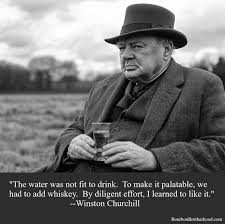
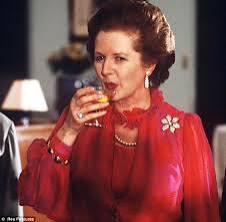
Health and Medical Aspects of Whiskey
Whiskey has long been associated with both medicinal benefits and health risks. In the past, it was even prescribed by doctors for various ailments.
1. Traditional Medicinal Uses of Whiskey
Before modern medicine, whiskey was used as a remedy for:
- Colds and Flu – Hot toddies (whiskey, honey, lemon) were believed to soothe sore throats and congestion.
- Pain Relief – Used as an anesthetic before surgeries in the 19th century.
- Antiseptic – Applied to wounds as a disinfectant.
- Relaxation & Stress Relief – Many believed a small amount of whiskey helped with sleep and nerves.
2. Potential Health Benefits (When Consumed in Moderation)
Studies have suggested that whiskey may have certain health advantages:
- Heart Health – Contains antioxidants like ellagic acid, which may reduce heart disease risk.
- Diabetes Prevention – Some studies suggest whiskey may help regulate blood sugar.
- Brain Protection – Certain compounds in whiskey have been linked to lower dementia risks.
- Low-Calorie Alternative – Compared to sugary cocktails, whiskey is a cleaner drink option.
However, these benefits apply only to moderate drinking—excessive consumption cancels them out.
3. Health Risks of Excessive Whiskey Consumption
While whiskey in moderation has benefits, excessive drinking carries serious risks:
- Liver Damage – Chronic alcohol use can lead to cirrhosis and liver failure.
- Heart Issues – Heavy drinking can increase blood pressure and the risk of heart disease.
- Cognitive Decline – Long-term excessive use has been linked to memory loss and dementia.
- Addiction & Mental Health – Whiskey, like all alcohol, can be addictive and contribute to depression.
The key is responsible drinking—whiskey should be enjoyed as a treat, not a dependency.
Final Thoughts: Whiskey’s Eternal Legacy
Whiskey has transcended time, geography, and culture to become one of the most iconic beverages in history. From ancient monks distilling crude spirits to modern billion-dollar brands, whiskey has been a constant companion to humanity’s greatest (and worst) moments.
It has inspired writers, fueled political movements, and shaped economies. It has been a drink of kings and criminals, a medicine and a poison, a luxury and a necessity.
So the next time you pour yourself a glass, know that you’re not just drinking whiskey—you’re tasting history.

